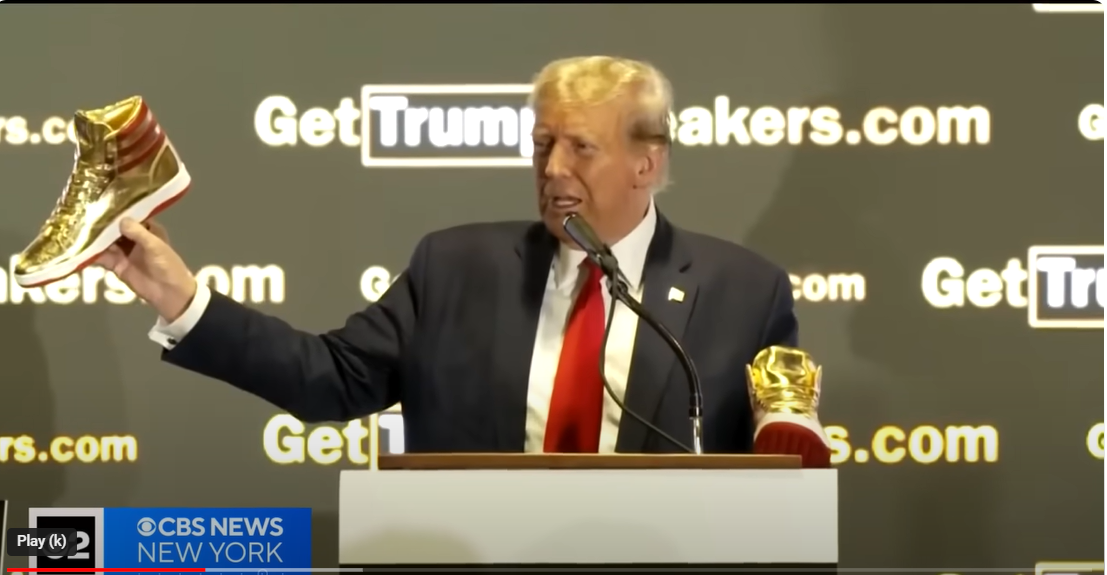In a bid to sway the younger electorate President Joe Biden and former President Donald Trump are adopting novel strategies to appeal to Gen Z and Millennial voters, crucial demographics that represent about 17% of the electorate.
Biden has taken to TikTok, engaging in popular culture by sharing personal stories and responding to public figures like Jimmy Fallon. His campaign has targeted issues close to the younger demographic, including addressing “shrinkflation” and announcing significant student loan forgiveness. The Biden administration has also expanded its digital outreach by hiring youth and celebrity engagement directors, indicating a strategic shift towards more personalized and youth-centric campaign messaging.
Concurrently, Trump has opted for a less nuanced approach, launching a gold painted sneaker line; the shoes retail for $399 and were debuted SneakerCon. His appearances on platforms favored by young men, including the “Full Send” podcast, signal a focused attempt to court this demographic.
Their efforts to connect with voters aged 18-34 come amid signs of waning enthusiasm for the likely Biden-Trump rematch in the upcoming presidential race. This demographic pivot is especially critical as Biden aims to retain his 2020 support base, while Trump seeks to erode Biden’s lead among younger voters, leveraging recent global events to his advantage.
Both campaigns are navigating the complex landscape of digital and pop culture to forge connections with young voters, employing tactics ranging from social media engagement to celebrity endorsements. While Biden focuses on policy initiatives and digital content creation to resonate with young voters’ concerns, Trump capitalizes on his long-standing affinity for pop culture and celebrity connections to appeal to the same demographic.
This electoral strategy reflects a broader recognition of the young electorate’s power and the necessity of meeting them “where they are” through innovative and relatable content. However, the reception to these overtures has been mixed, with both candidates facing skepticism and criticism in their efforts to engage with young voters, the inherent challenge of bridging generational divides in political campaigning.












